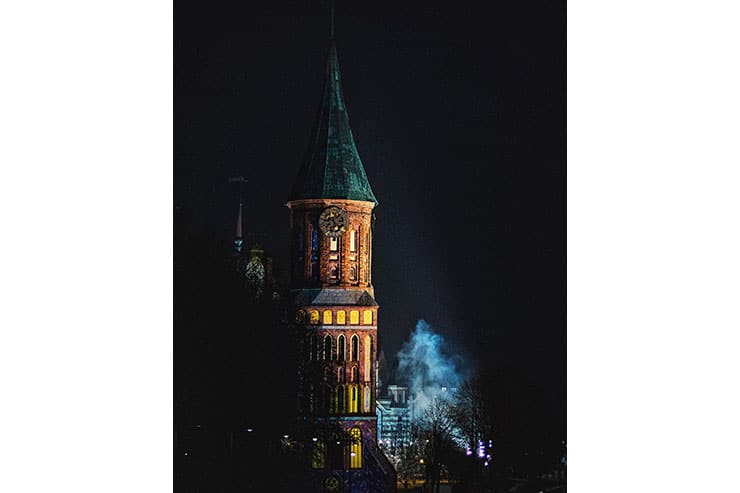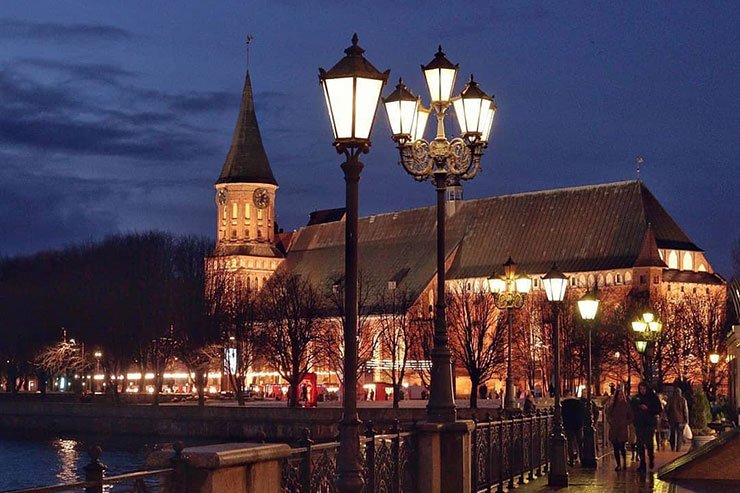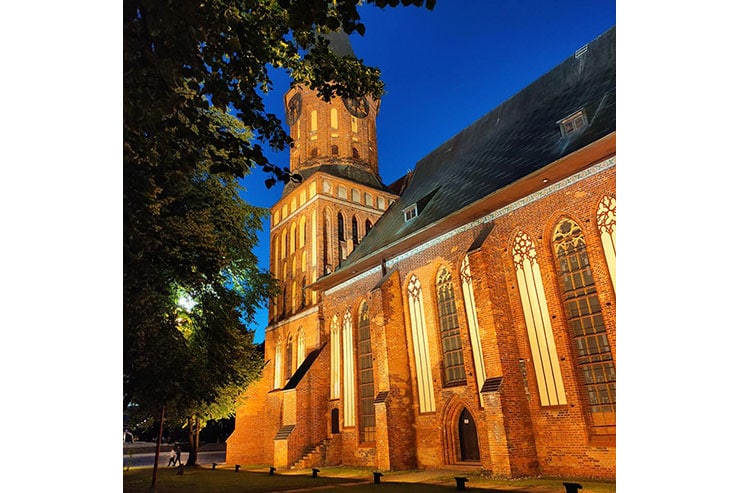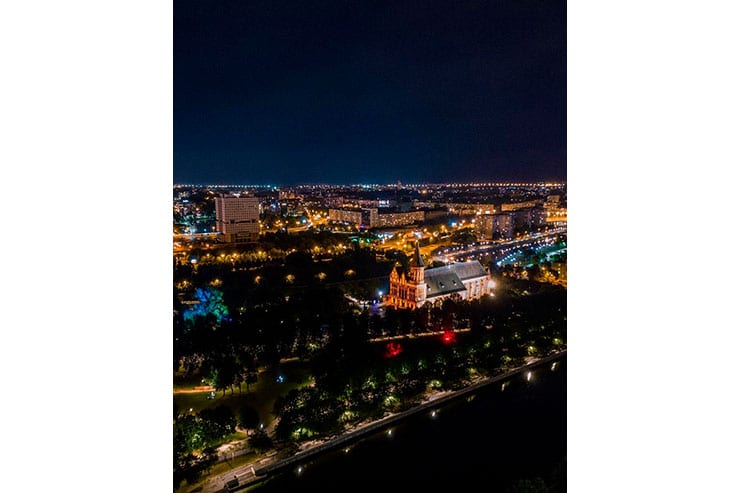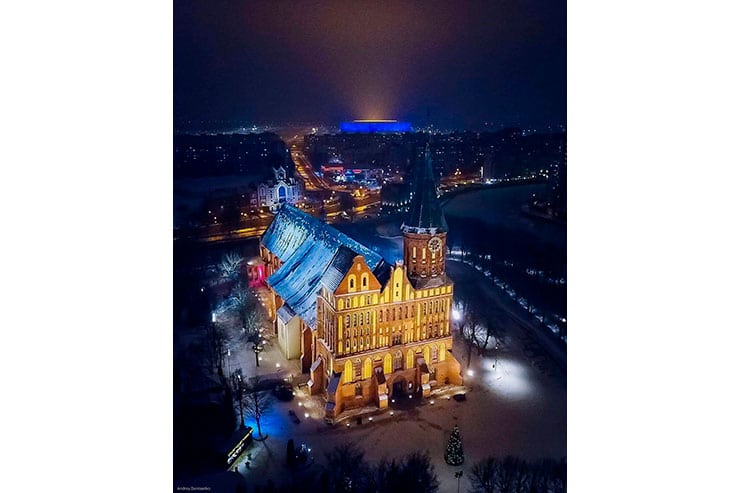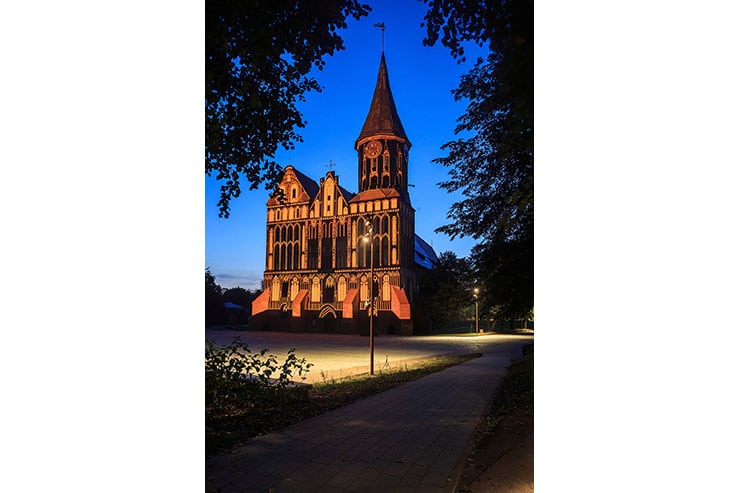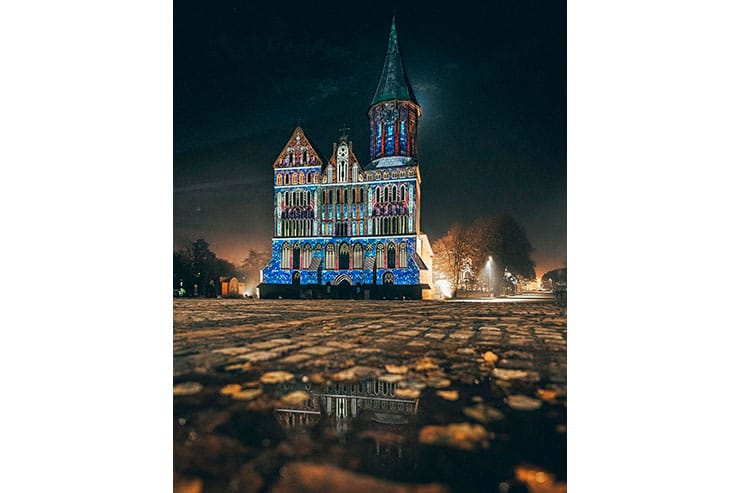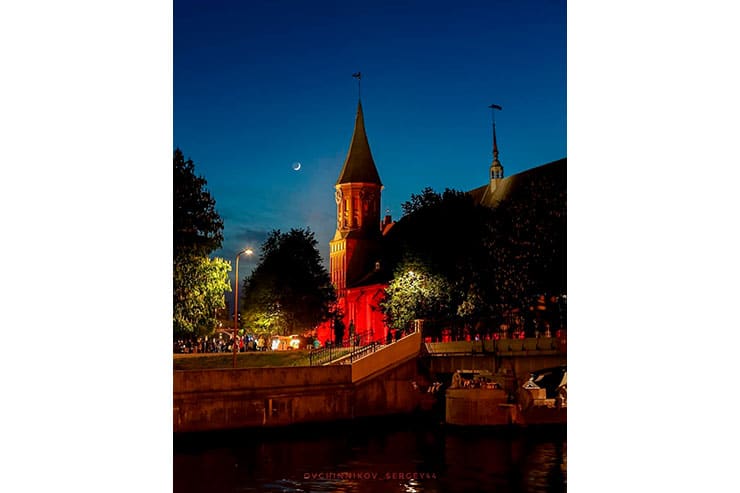- ABOUT
- JUDGING
- CONTACT
- MORE
- 2024 Entries
- Installations 2024
- Past Winners
- Subscribe
- [d]arc directory
- arc magazine
- darc magazine
The Konigsberg Cathedral, Russia
ProjectThe Konigsberg CathedralLocationKaliningrad, RussiaLighting DesignLudvig Sergey, RussiaClientKonigsberg CathedralLighting SuppliersIntiLED, BlackRays
As part of the work with Kant’s Island, both in its conceptual part and implementation, a separate task was the elaboration of the Cathedral. At the moment, it is one of the important culturally significant symbols of Kaliningrad
Conceptually, the cathedral is dominant both locally (within the island) and globally (in the city panorama). To fulfill the conceptual task, the main solution was to create and maintain a coherent perception of the cathedral volume, taking into account that its height at its peak point is about 63 m
The basic temperature scheme is based on a combination of 2700K for the brick wall and 4000K for the copper roof. The most successful combination was suggested at the conceptual stage and tested with a mockup
*The warmer temperature on the brick worked better and accentuated it against the 3000K functional lighting around it. And the neutral temperature of the roof worked well with its material and with the warm hue of the cathedral, also at the level of quantitative contrast*
As for luminance, the average values for the walls are about 10 cd\m² and 5 cd\m² for the roof
The final lighting installation has 117 luminaires of varying power, optics and temperature. The lighting structure is based on 58 lighting fixtures on the perimeter of the cathedral, as well as 59 lighting fixtures on 13 pillars
The main design difficulties were to develop with the manufacturer custom versions of the equipment:
– A number of mocaps were made for the wall to get a WW spotlight that could evenly flood the walls not only lengthwise, but also visually in height (12-14m), while not having a high shadow cut-off at the bottom (less than 1m). In this case, it is a symbiosis of three different optics within the instrument;
– for roof devices were made a number of transformations to the luminaires, which raised the power and luminous flux by +25-50%, while solving the problem of heat dissipation;
This allowed to get the designed brightness and not to increase the amount of equipment
Seasonal colour schemes were developed using RGBW spotlights for Kant’s tomb as part of the art component, as a tourist marketing and attraction of attention. They fit harmoniously into the views of the cathedral, including across the Pregolya River
As an element of the event show, gobo projections were made for the main facade of the cathedral, including a Christmas version. The projections are not a permanent lighting element, but are turned on for events at certain times
Another interesting solution, which emerged during the implementation of the project, is the use of coloured light filters on the main lighting installation. For example, for the Museum Night event a red shade of filters was used.
Such solutions allow a fairly budget-friendly and temporary change in the perception of a massive object. And moderate variety is a good element of attracting attention
Cathedral is integrated into the overall control system which takes into account light pollution and environmental impact on the park area. It has basic everyday cascading scenarios with dimming
As a result, the approach and solutions made it possible not only to accomplish the task, but also to make a sufficiently soft and inviting perception, both from the lighting itself and from the entire scale and volume of the cathedral
